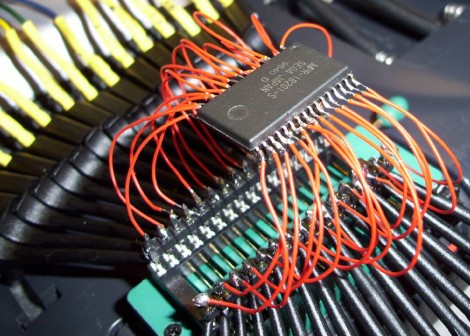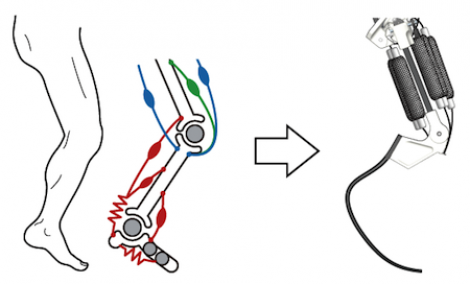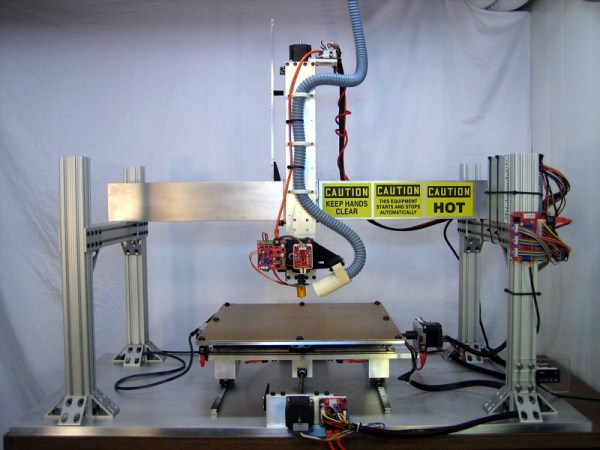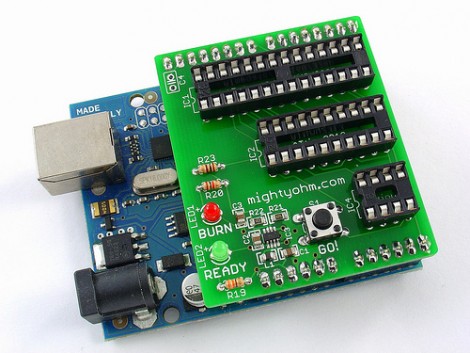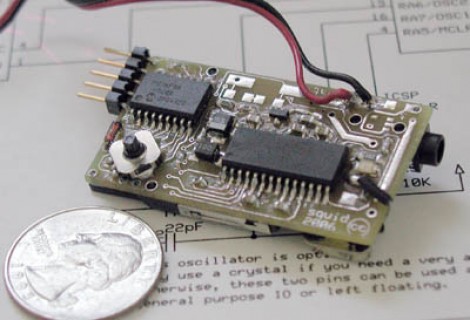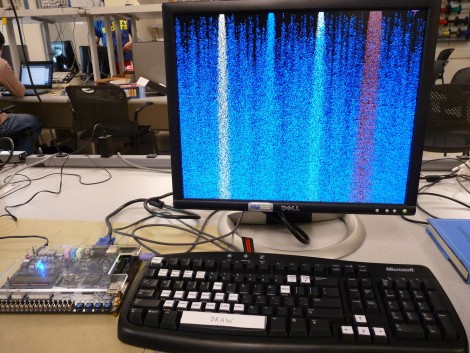
This falling sand game runs on a field-programmable gate array. The Altera Cyclone II resides at the heart of that development board, running the game which was written in Verilog. [Skyler Schneider] modeled his project after a Java version of the game called Pyro Sand Game. He treats each pixel of the 640×480 VGA screen as its own cell, following a set of rules to change the cells around it. This is very similar to Conway’s Game of Life, except that there are different categories of cells that behave uniquely (oil, water, plant, fire, etc.) and gravity is a key factor. Of particular interest to us were the rules for each cell, and the method [Skyler] used to feed and sync the VGA output. After the break you can see his demonstration videos, which walk through all of the features including the Troll button.

